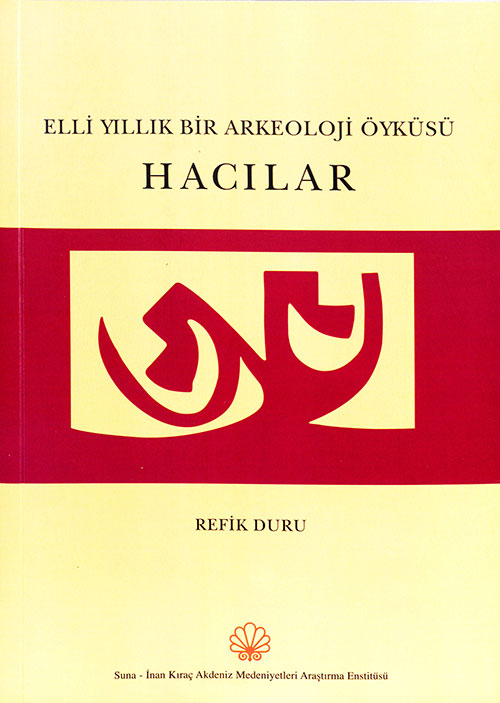
| Author | Refik Duru |
| Editor | Kayhan Dörtlük – Tarkan Kahya – Remziye Boyraz – Tuba Ertekin |
| Material Type | Book |
| Year | Antalya, 2010 |
| ISBN No | 9786054018086 |
| Dimensions | 160×230 mm. |
| Page | 56 p. |
| Figure | 106 plates |
| Language | in Turkish |
| Series | Suna – İnan Kıraç Akdeniz Medeniyetleri Araştırma Enstitüsü Monografi Dizisi 6 |
Summary
The first bits of information on the Neolithic and Early Chalcolithic periods, which lasted ca. from 8000 to 6000 BC on eth Anatolian plateau, started to come when the British archaeologist James Mellaart initiated excavations at Hacılar in 1957 and it was understood that Burdur region with its brilliant cultures was of utmost importance for these periods of Anatolian prehistory. Since then, information on the Neolithic and later cultural phases of Anatolia has augmented immensely; yet, the Hacılar excavations retain their importance to some extent.
On the one side are Hacılar’s importance and its scientific contributions to Anatolian archaeology; however, a series of events, in which Hacılar was the protagonist, starting in 1957 lasted for 30 years until 1986, for us. This second period succeeded the scientific excavations and will be remembered by those over 60 years of age; it encompasses the activities initiated amateurishly (?) by Hacılar villagers first but then developed into illicit digs and recovery of items from around and their professional marketing in the domestic and international markets, reaching great sizes particularly in the first half of the 1960s.
The first chapter of our Hacılar file is the story of the events that took place long before we arrived in the region and indeed, they can be considered a series of detective and mystery stories. The second chapter covers our excavations, research and investigation results. In the last chapter we will express our inspections, what we learned and determined and our comments about the events of 50 years earlier. In our writing we endeavoured not to be very dry academic or not to be very speculative. I hope that with the Hacılar file coming back to the agenda it may be of help both for science and for other issues.
